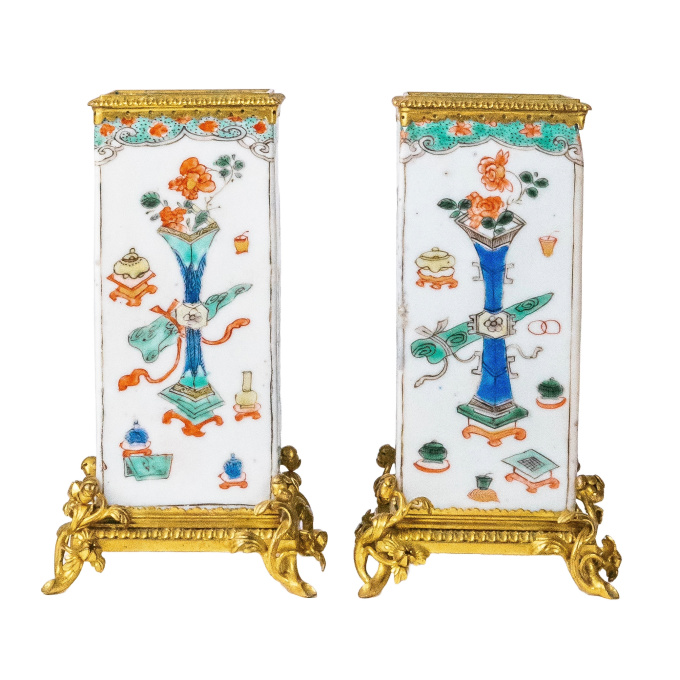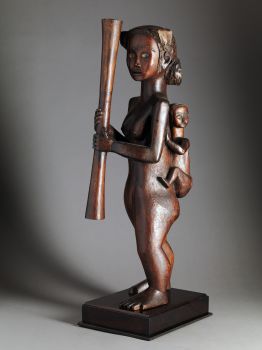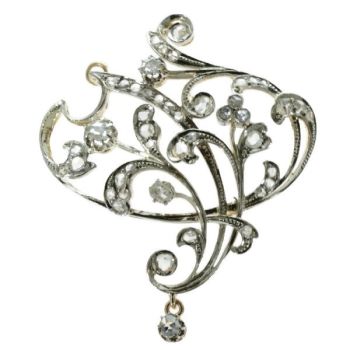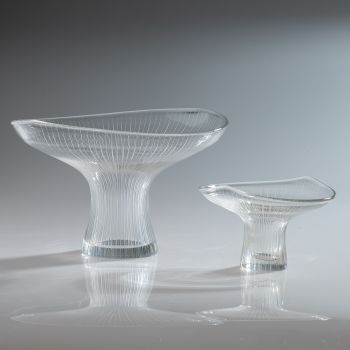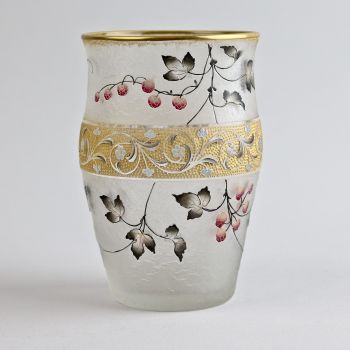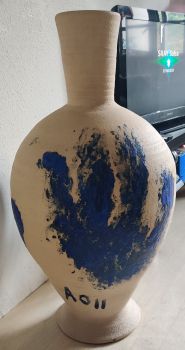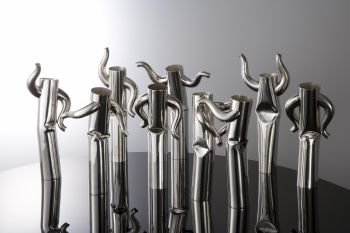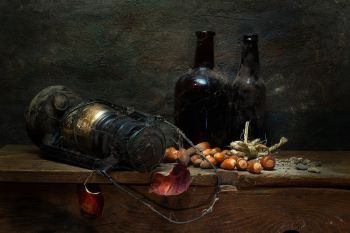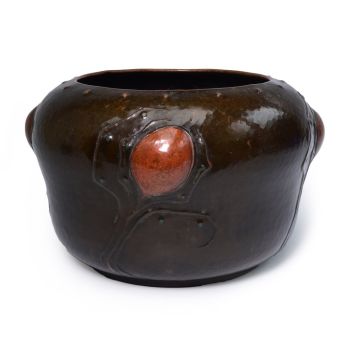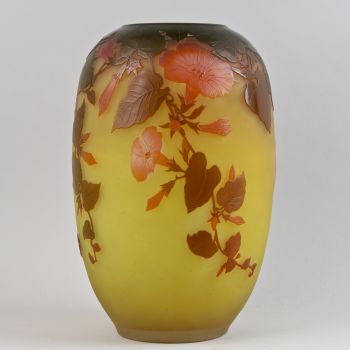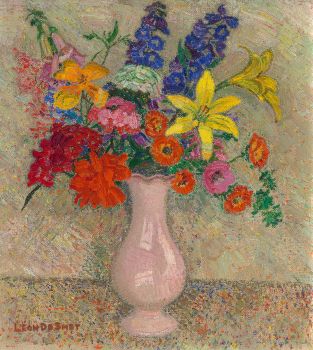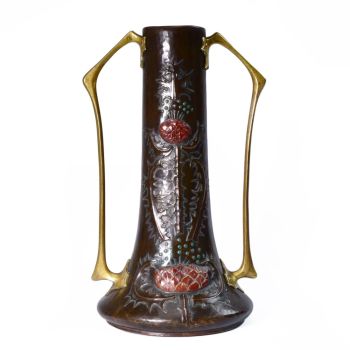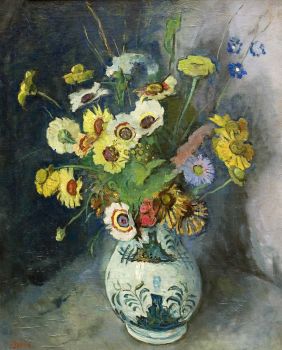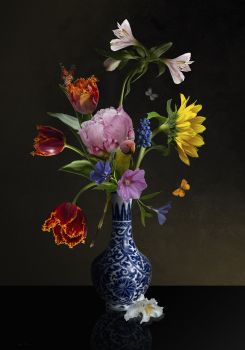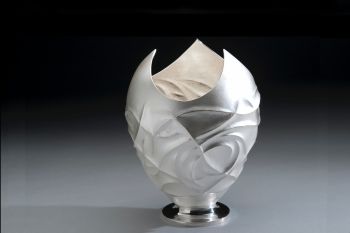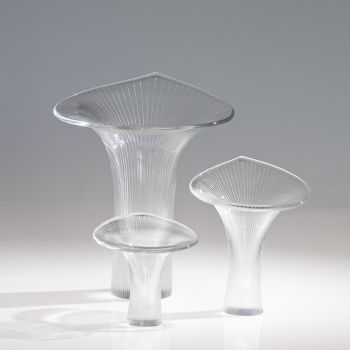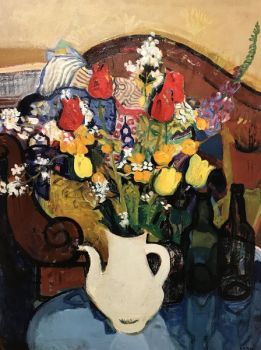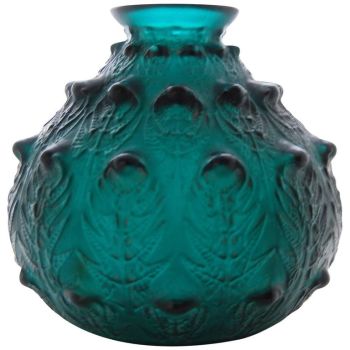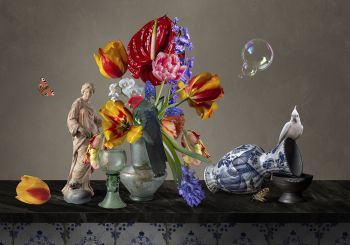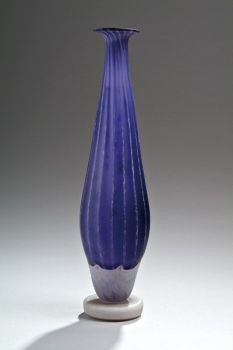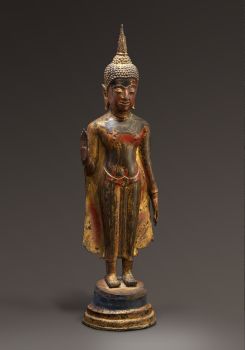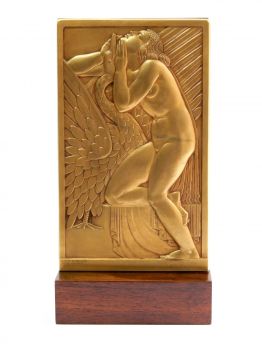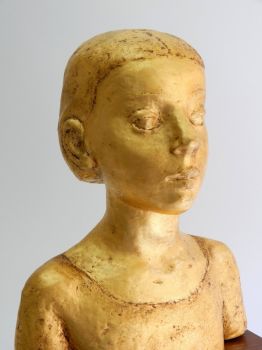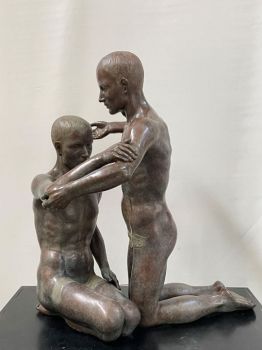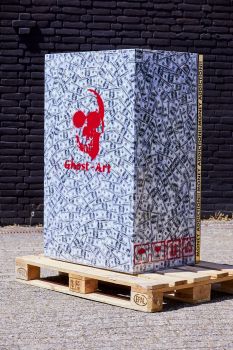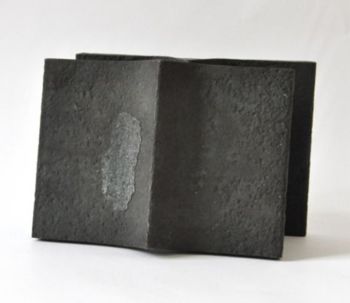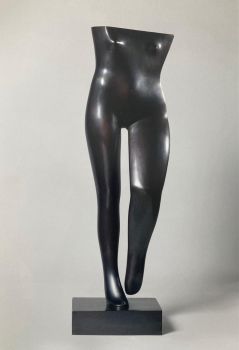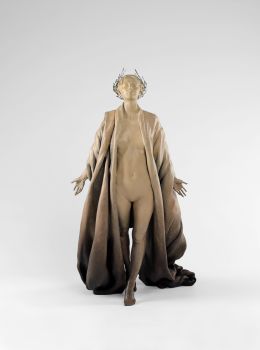A pair of famille verte vases, 18th century Kangxi 1662 - 1722
Artiste Inconnu
Bronze doréPorcelainePorcelaine chinoiseMétal
17 cm
ConditionVery good
Actuellement indisponible via Gallerease
- Sur l'oeuvre d'artA pair of Kangxi period (1662-1722) famille verte vases with the ‘Hundred Treasures’ decor and gilt-bronze mounts, around 1700, Jingdezhen, China.
Famille Verte
Dimensions: 16.8 cm. height.
This exceptional pair of vases has a fine decoration in famille verte style. The use of this style and colours emerged from 1670, during the Kangxi period (1662-1722). Famille verte can be characterized by the use of a combination of the colours green (predominantly), red, blue and yellow. The cobalt blue could be underglaze but it also appears overglaze as the other colours.
On two sides of both vases the ‘Hundred Treasures’ (or the ‘Hundred Antiques’, baigu 百古) are shown. This is a term used for a collection of Chinese symbols or symbolical items that often are depicted in Chinese art. It comprises precious objects, scholar objects and symbols, often referring to the four Chinese ancient arts. The Hundred Treasures are not specifically defined but they comprise specific sets called the ‘Eight Treasures’ (babao 八宝) and the ‘Four Treasures’.
On one side, we can see a resplendent vase with peonies in it, surrounded by treasures. On the opposite side, a beautifully detailed vase as well is shown in the middle, with peacock feathers and blood coral in it. The peacock feathers represent an official rank. The coral stands for longevity. This is very expectational and rich decoration. Also on this side the vase is surrounded by the Hundred Treasures including precious porcelain objects. The other two sides show a natural landscape with rocks overgrown by plants and flowers. Around the flowers, butterflies are flying. The vases are finished with fine gilt-bronze mounts to the top and bottom. The bottom mounts each have four elegant feet surrounded by moulded roses. The insides have bronze compartments as well. These compartments can be lashed out and could be used to add water to the vase without damaging the porcelain paste. The bronze mounts are crafted in Europe (France), in the 19th century.
Condition: good, some small fritting to the side. - Sur l'artiste
Il peut arriver qu'un artiste ou un créateur soit inconnu.
Certaines œuvres ne doivent pas être déterminées par qui elles sont faites ou elles sont faites par (un groupe d') artisans. Les exemples sont des statues de l'Antiquité, des meubles, des miroirs ou des signatures qui ne sont pas claires ou lisibles, mais aussi certaines œuvres ne sont pas signées du tout.
Vous pouvez également trouver la description suivante :
•"Attribué à …." A leur avis probablement une oeuvre de l'artiste, au moins en partie
•« Atelier de …. ou « Atelier de » À leur avis, une œuvre exécutée dans l'atelier ou l'atelier de l'artiste, éventuellement sous sa direction
•« Cercle de… ». A leur avis une oeuvre de la période de l'artiste témoignant de son influence, étroitement associée à l'artiste mais pas forcément son élève
•« Style de … ». ou "Suiveur de ...." Selon eux, une œuvre exécutée dans le style de l'artiste mais pas nécessairement par un élève ; peut être contemporain ou presque contemporain
•« Manière de… ». A leur avis une oeuvre dans le style de l'artiste mais d'une date plus tardive
•"Après …." A leur avis une copie (quelle qu'en soit la date) d'une oeuvre de l'artiste
•« Signé… », « Daté… ». ou « Inscrit » À leur avis, l'œuvre a été signée/datée/inscrite par l'artiste. L'ajout d'un point d'interrogation indique un élément de doute
• "Avec signature ….", "Avec date ….", "Avec inscription …." ou "Porte signature/date/inscription" à leur avis la signature/date/inscription a été ajoutée par quelqu'un d'autre que l'artiste
Artwork details
Related artworks
- 1 - 4 / 12
- 1 - 4 / 12
- 1 - 4 / 24
Paulus Franciscus Kromjong
Fleurs devant Arearea Aka (joie) par Gauguin '20th century
Prix sur demandeZebregs & Röell - Fine Art - Antiques
Herman Bogman jr.
Flower still life of a nasturtium in a blue vase1950 - 1965
Prix sur demandeAdelwein Kunst
René Lalique
Un très rare vase «Fougères» vert foncé conçu par R. Lalique1912
€ 8.950Lennart Booij Fine Art and Rare Items
 Sélectionné par
Sélectionné parSilla Scheepens
1 - 4 / 24Artiste Inconnu
Series of 6 Chinese cups and saucers (Yongzheng period)1722 - 1735
Prix sur demandeKuipers Kunst & Antiek
1 - 4 / 24

